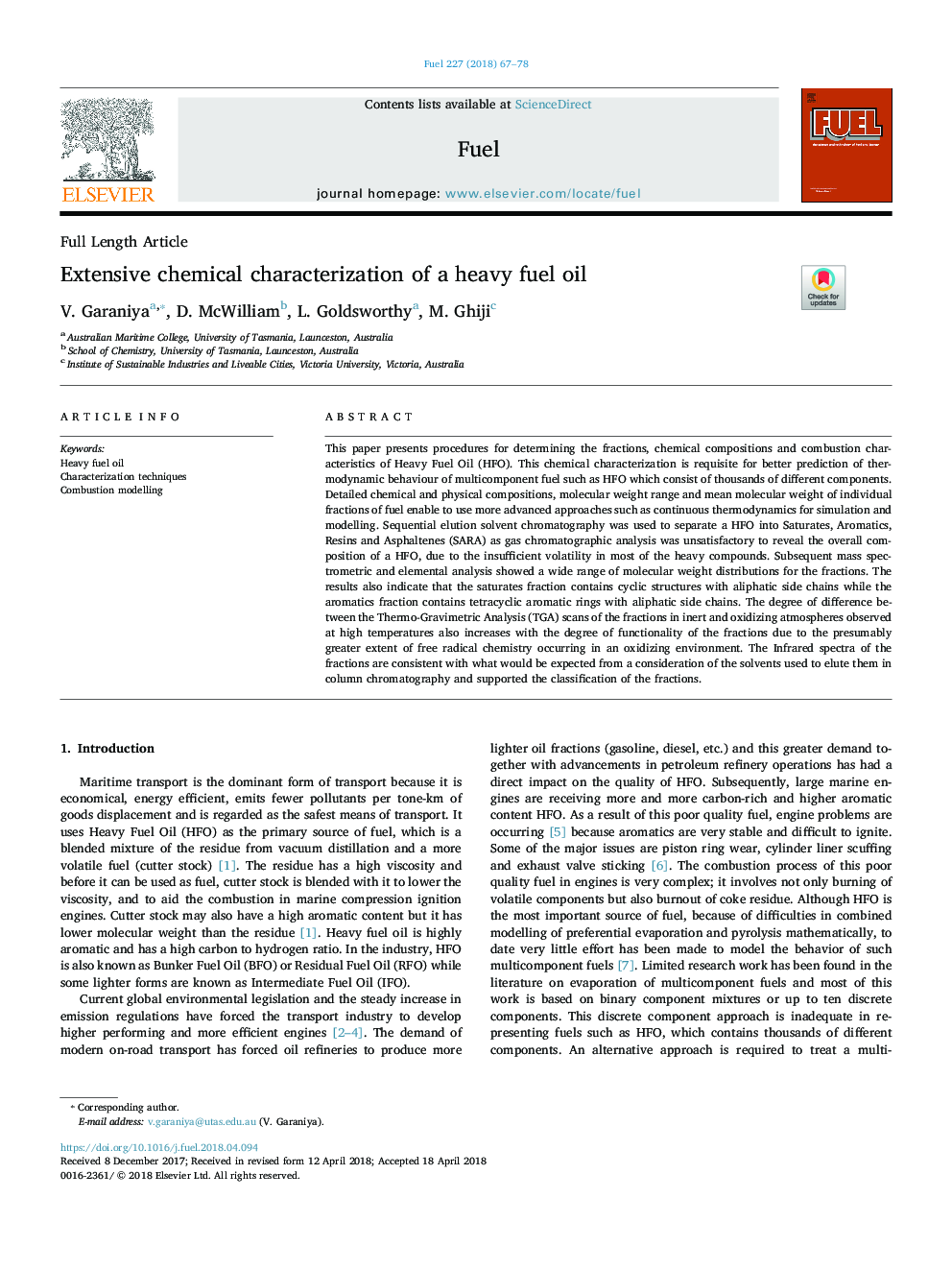| Article ID | Journal | Published Year | Pages | File Type |
|---|---|---|---|---|
| 6630787 | Fuel | 2018 | 12 Pages |
Abstract
This paper presents procedures for determining the fractions, chemical compositions and combustion characteristics of Heavy Fuel Oil (HFO). This chemical characterization is requisite for better prediction of thermodynamic behaviour of multicomponent fuel such as HFO which consist of thousands of different components. Detailed chemical and physical compositions, molecular weight range and mean molecular weight of individual fractions of fuel enable to use more advanced approaches such as continuous thermodynamics for simulation and modelling. Sequential elution solvent chromatography was used to separate a HFO into Saturates, Aromatics, Resins and Asphaltenes (SARA) as gas chromatographic analysis was unsatisfactory to reveal the overall composition of a HFO, due to the insufficient volatility in most of the heavy compounds. Subsequent mass spectrometric and elemental analysis showed a wide range of molecular weight distributions for the fractions. The results also indicate that the saturates fraction contains cyclic structures with aliphatic side chains while the aromatics fraction contains tetracyclic aromatic rings with aliphatic side chains. The degree of difference between the Thermo-Gravimetric Analysis (TGA) scans of the fractions in inert and oxidizing atmospheres observed at high temperatures also increases with the degree of functionality of the fractions due to the presumably greater extent of free radical chemistry occurring in an oxidizing environment. The Infrared spectra of the fractions are consistent with what would be expected from a consideration of the solvents used to elute them in column chromatography and supported the classification of the fractions.
Related Topics
Physical Sciences and Engineering
Chemical Engineering
Chemical Engineering (General)
Authors
Vikram Garaniya, Don McWilliam, Laurie Goldsworthy, Mohammadmahdi Ghiji,
